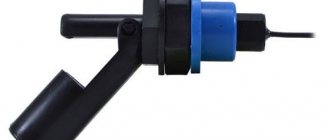For any admirer of good steam, the use of a stainless steel tank for a bath is considered an unrecognized standard, an indicator of a high-class heater and steam room in general. In addition, this concerns the appearance of the container and the safety of using the stove. The only worthy competitor to stainless steel water tanks are copper and brass soldered structures. They are rarely found on sale, at exorbitant prices, so most owners make do with alloy steel containers.
Do you need a stainless steel hot water tank in a bathhouse?
The answer to the question is not as obvious as it might seem at first glance. Most owners of steam rooms, before buying stainless steel water tanks for a bath, doubted for a long time about the correctness of their choice, and it’s not even the high price of a stainless steel tank, they were frightened by the shortcomings that few people know about.
Everyone knows about the benefits of using stainless steel for baths:
- The tank does not rot or rust, as in the case of using conventional ferrous metal;
- Remarkable appearance of polished steel, decorative qualities;
- Easy care and maintenance of the stainless steel tank. The body can be washed and cleaned with a brush, detergents and even phosphoric acid;
- A container made of alloy steel is not afraid of thermal and mechanical shocks, mechanical load, and there are no chips on the surface of the coating, like enameled products.
For your information!
Stainless steel is an extremely capricious and inconvenient material. It is especially difficult to weld a tank for a sauna stove from thin-sheet stainless steel blanks. Therefore, a good alloy steel cylinder for hot water is usually ordered from companies that have good equipment, and most importantly, high-quality welders.
It is clear that a container for hot water in a bathhouse is not cheap, more expensive than the 70-100 dollars for which you can buy a stainless steel tank in any salon that sells equipment for bathhouses and stoves. Of course, this does not mean that you only need to make a stainless steel tank for a bathhouse with your own hands; far from it, you can buy an excellent model made of alloy or stainless steel with additional functions that will last for several decades without a single comment. You just need to try to choose the right quality product.
Construction of stainless steel tanks for a bath, what to look for
In a modern steam room, several standard options for containers for obtaining boiling water are used. The design of stainless steel water tanks depends on the method of heat extraction from the stove, so the container is selected, first of all, taking into account the structural features of the chimney, installation location and the need for boiling water for the washing department.
The salon most often offers to buy one of three models:
- The most popular and safest is a mounted tank, made of thin-walled stainless steel, most often in the shape of a “suitcase”. To heat water, it is mounted on one of the side walls of the stove;
- An attached tank, or samovar, is a cylindrical container, inside of which a section of the stove chimney pipe is embedded. Heat for water is removed from combustion products and flue gases through the walls. Available in a variety of stainless steel grades;
- A wall-mounted or wall-mounted tank, heat is removed from the stove using a coil built into the firebox. The stainless steel container is located a short distance from the heater, so this model is considered the safest.
If in the first two cases the use of stainless steel is justified by the high temperature of the hot furnace walls, then a hanging stainless steel tank for a bathhouse is considered to be an element of room decor.
Application options
Storage tanks are relevant in places where there are interruptions in water supply.
Indoors, water tanks are most often installed in a horizontal position. The tanks are used to store rainwater and tap water. With their help, you can organize an outdoor shower or keep them for fire safety purposes so that you can extinguish the fire.
They can store water for watering plants, gardens and vegetable gardens. Often round tanks are installed in a bathhouse to store water. There are many designs that can be round, rectangular or other shapes.
Is it worth buying a stainless steel hanging tank?
According to many experts, the beautiful, shiny body of the container does not experience any stress, either thermal or mechanical, therefore, thanks to the alloyed metal of the walls, it can last an unlimited amount of time.
If, when purchasing, you have the opportunity to choose the type and material of the container, then it is best to opt for a hanging tank made of stainless steel. Any containers made of ferrous metal, even with galvanization and a protective layer of paint, rot within 2-3 years of operation. As an illustration, mention may be made of electric boilers used for hot water in apartments.
The walls of a low-carbon mild steel tank, even if coated with a layer of ceramic enamel, are still subject to pitting due to the simultaneous action of water, high temperature and atmospheric oxygen. The service life of this container is extended thanks to built-in magnesium anodes. A similar situation arises with hot water tanks in the bathhouse. The production of stainless steel tanks, especially large ones, requires serious expenses, so they are not cheap, but in any case, the money invested in the purchase is worth it.
For your information! Stainless steel has very poor ductility; even a small amount of water in the tank, left in a bathhouse at the summer cottage in winter, can cause cracks in the welds.
FAQ
How to paint the tank to prevent corrosion?
Give preference to paints that are designed for use in rooms with high humidity. They will protect the outer walls of the equipment from rust formation.
Can the heat exchanger built into a sauna stove defrost in severe frost if the remote tank has not yet frozen? I filled the water tank and didn’t heat the bathhouse for a month. Where will the water start to freeze in the heat exchanger or in the tank located under the ceiling?
Most likely, the water will freeze at about the same time. The heat exchanger will rupture, since there is nowhere for the water to expand. The expansion tank will most likely burst very soon too.
Which pump to use when organizing hot water from a remote tank to a shower?
Use a pressure boosting pump. Please note that it must work with hot water. Good reviews about the WILO pump. It has a flow sensor, that is, it turns on itself when the tap is opened.
What method of sealing threaded connections is best to use to connect the tank to the heat exchanger?
Tangit Unilok in the form of a thread showed itself very well.
Features of the operation of mounted tanks
Cylindrical containers, or “samovars,” operate under the most severe conditions of high temperature. The chimney wall can heat up to 500-600°C. The metal of the walls burns into scale, as they say, to holes. In this case, using a stainless steel pipe for a sauna tank can be considered the best option.
The lower part of the tank is a metal glass with which the container is placed on the flange of the heater. This is the most loaded part of the structure. In addition to the high temperature of the walls, the weight of the tank itself and the water supply presses on the lower part of the stainless steel body. Plus, the hot glass gets the most boiling water and steam from the stones. In such conditions, ferrous metal burns out into rusty dust within a few months, so when choosing a specific tank model, pay attention to the bottom of the container; the thickness of the metal in this place should be at least 1.5 mm.
When choosing and inspecting stainless steel tanks for a bathhouse stove, it is imperative to pay attention to the quality of the welds on the bottom of the tank. The bottom part of the container of tanks from well-known Finnish and Swedish manufacturers is made of thicker metal or reinforced with stiffeners. In addition, the welding seams at the junction of the inner pipe, bottom and outer walls must be smooth and continuous, this indicates high quality welding.
Attention! Stoves and heaters in the bathhouse, equipped with mounted stainless steel tanks, cannot be heated without water.
If a container for hot water made of non-alloy steel is often deliberately not filled with water until the heater is ignited and completely lit, in order to speed up the process of gaining temperature, then in the case of stainless steel, such a “trick” can result in a burst wall or a dented bottom. Alloy steel has low thermal conductivity and a high coefficient of thermal expansion, therefore, during “dry” heating, severe stresses arise in the stainless steel glass and bottom part.
If a similar situation occurs, then you cannot pour water into an alloy steel container; you need to turn off the firebox and allow the stainless steel tank to cool to at least 50-60°C.
Attached containers made of alloy steel
Structurally, an attached stainless steel tank is a rectangular, square or semicircular container, at least with a fairly large flat wall. A metal box is installed on a cast iron or steel stove in such a way as to ensure maximum close contact between the side or bottom of the tank and the hottest part of the firebox.
Due to lower thermal conductivity, water in a stainless steel cylinder takes much longer to heat up than in steel and, especially, copper tanks. This is one of the reasons why they prefer to make the walls of alloy steel containers as thin as possible. For ease of carrying, the design is equipped with side handles.
At the bottom of the container, a coupling or fitting is welded under the tap for drawing hot water. When choosing a specific model of an attached tank, you need to pay attention to two conditions:
- The hole for installing the tap should be located on the wall opposite the firebox. If you install a ball valve with polyethylene liners closer to the furnace than 20 cm, then during the heating process the internal parts of the valve, made of polymers, very quickly melt and lose their tightness;
- The stainless steel tank body must be equipped with its own fastening to the base, even if the cylinder will partially rest on the wall and parts of the furnace.
Attached stainless steel tanks are very reliable and durable in operation; the container is often used to heat water not only for use within the steam room, but also for any other purpose where warm-hot water is required. It is quite possible for two adults to heat and carry a cylinder of boiling water.
general information
Why are water containers made of metal or any other material needed? The answer to this question is obvious, but for some it remains open. The fact is that everyone uses storage tanks differently. Their purpose is to collect and store water for later use. How and in what form you will do this is up to you to decide.
The tank can have different shapes, depending on its purpose. A regular rectangular large tank can be used to collect rainwater. For a summer shower, you can use a flat, low tank that can be easily mounted on top of a metal frame. It all depends on the purpose of use.
Often, ordinary metal barrels are used as such a storage tank. This is a practical and inexpensive option, but not always convenient. Especially because of its open top, through which insects enter the water, and plants and rust form on the walls of the tank. It can also be used to collect rainwater only if you have drains and it is possible to lead the pipe directly to the barrel.
In order not to have to worry about barrels, craftsmen make homemade metal tanks. They have a simple design and low cost. Below you can see one of the possible drawings of a storage tank. This container is small in size, but quite spacious and holds up to 200 liters of water.
How to make a stainless steel container with your own hands
The retail price of one stainless steel tank of 50-70 liters, regardless of shape and design, is within 7 thousand rubles, a good quality cylinder will cost 10 thousand rubles. If you do it yourself, then making a 50 liter tank will cost only 30-40 dollars.
The amount of work is small:
- Select materials, thin-sheet stainless steel and welding material;
- Cut the body blank, adjust the dimensions;
- Weld a stainless steel tank, check the tightness of the seams;
- Conduct a test within the walls of the bathhouse.
The process is simple, but before you make a stainless steel tank with your own hands, you need to figure out the right choice of materials and select the welding mode.
Built-in
Built-in tank
This is a kind of budget option. It is placed above the firebox, from which the water is heated. Water is drawn from such a tank directly or the tap can be removed from it in advance. This tank is easy to install - it is installed when laying the furnace.
Now all that remains is to choose the metal from which the tank will be made. The main materials used to make tanks are cast iron, stainless steel, enameled metal and steel. The choice of material also plays an important role in the design of tanks.
The best materials for a stainless steel tank
Of the hundreds of existing grades of stainless steel, we need thin sheet metal with the best ductility and weldability. It is not difficult to weld a structure, even if you have to work with a thin sheet, but it is much more difficult to make a weld so that it does not become covered with microcracks.
If possible, it is best to choose austenitic steel, for example, the most popular and well-known stainless steel grade X18N9T. It is easiest to weld in a makeshift garage. As consumables, you can use wire for carbon dioxide semi-automatic machines with a diameter of 0.8 mm. If a stainless steel tank is made for sale, then it is best to look for specialized wire, any kind, as long as the marking contains a link to GOST 2240-60.
It is better to cook a stainless steel tank with wire in argon or carbon dioxide, because the metal is very thin. If you plan to make a tank from a 3-5 mm sheet, then it is best to use a plasma torch or a three-phase welder with a rectifying bridge and ballaster.
Features of the manufacturing process
The easiest way is to make a container of a rectangular or cubic shape; to work, you only need a grinder with a disk, a measuring stick, several bench clamps and the welder itself. The cut wall blanks are joined in pairs using clamps and secured with welding points or small seam strips.
After the side walls and bottom have been assembled, the stainless steel body is finally assembled with clamps and heated with a blowtorch. As soon as the sliver applied to the metal begins to smoke, you can begin to completely scald all the seams. Upon completion of the work, the welded block must be immediately covered with any heat-resistant, non-flammable material and allowed to cool slowly for a couple of hours.











